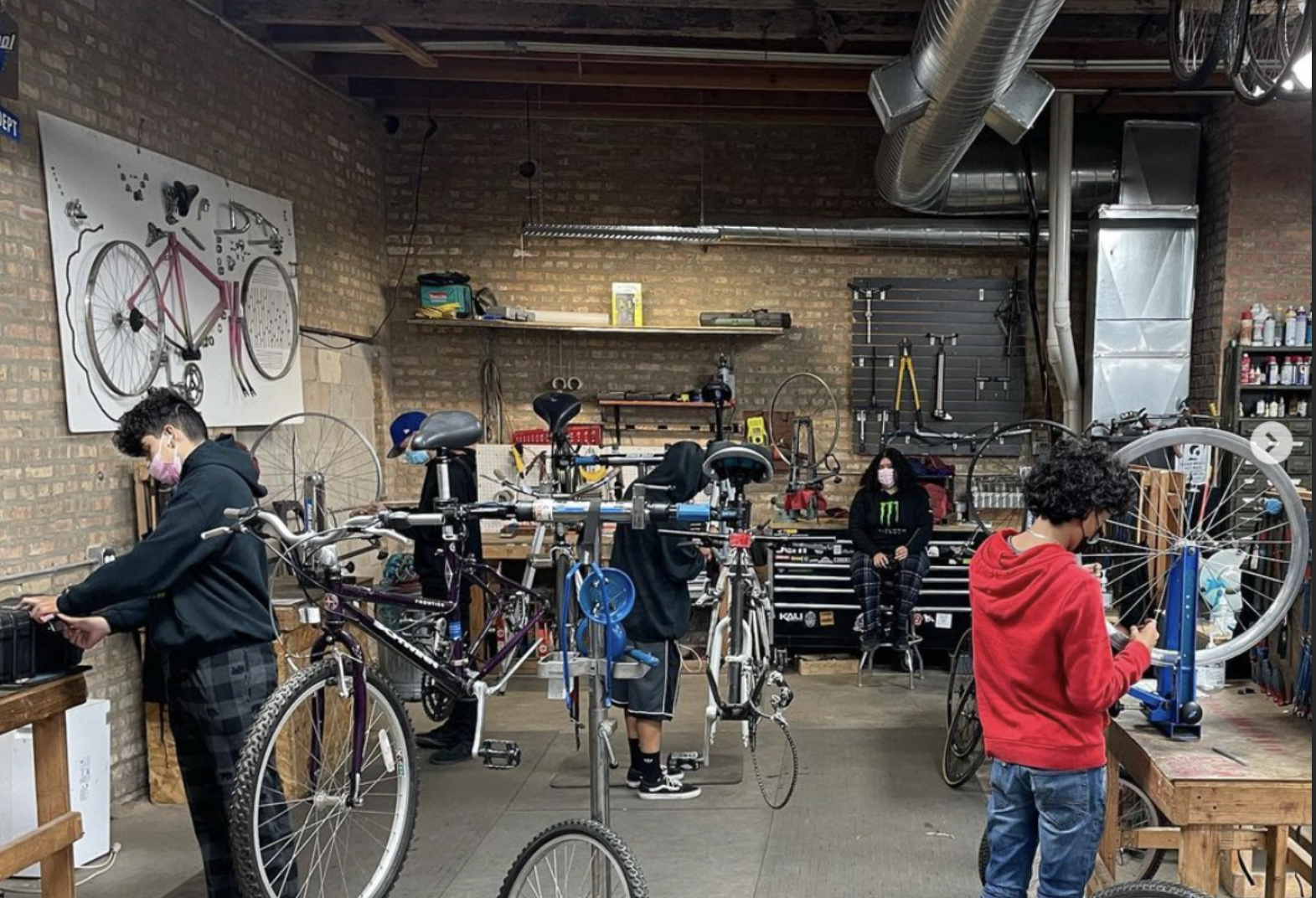A large property next to the California 'L' station that's now on the market is likely to spark more concerns about gentrification. The high-end transit-oriented development boom in Logan Square has drawn a stiff backlash from affordable housing activists who say the trend is accelerating the displacement of lower-income and working-class residents from the neighborhood. The parcel, 2274 N. Milwaukee Ave., is currently occupied by a Family Dollar store and its large parking lot. Curbed Chicago posted about the for-sale property this morning.
The site is 27,360 square feet, so even if the structure that's built on it is only six stories tall, about half the heigh of the MiCA TOD towers across the street on Milwaukee, it could contain hundreds of housing units. However, the current zoning is C1-1, which is the most restrictive and lowest density mixed-used residential-commercial zoning classification. The maximum number of units allowed under this designation is a mere 13.
The future developer of the site would most likely try get a zoning change to something like B3-3, which allows for more types of retail and commercial businesses, and over 100 units. However, to build more than 100 units they would also need to go through the planned development process, which is akin to a negotiation between the city's planning department and the owner to ensure that there are benefits for the community.
The city's affordable housing ordinance requires that, in exchange for a zoning change, the developer makes ten percent of the units of the building affordable for households earning up to 60 percent of the Chicago region's area median income, currently $47,600 for a family of four, or else pay into a fund to help build affordable units elsewhere. Raymond Valadez, chief of staff for 1st Ward alderman Joe Moreno will continue his longstanding policy of requiring that developers take the more expensive option of building the affordable onsite before he will sign off on a zoning change.
Valadez added that Moreno "will work with the community to present a community benefits package to any potential developer. The package will include significant affordable housing commitments and may could include requests for public green space, support for our local schools or support for the inclusion of Chicago Housing Authority units."
Moreno has previously been the target of protests by housing activists, who have argued that the new TODs – all of which have been upscale buildings with relatively steep rents – will lead to higher property values, property taxes, and and rents for existing residents. On the other hand, some researchers have found that the opposite is true, that building more market-rate units helps mitigate these issues by increasing the housing supply.
If a large residential building is constructed on this site, it would have the potential to generate plenty of revenue for the city through property taxes. Grow Chicago, The Metropolitan Planning Council's TOD calculator, estimates that a building with 250 residences and 10,000 square feet of retail could generate over $7 million over 10 years. However, since the Family Dollar site lies within the Fullerton/California TIF district, 100 percent of the development's property taxes would go into an account controlled by the mayor's office.
If the future owner were to accept TIF money to partially fund the development, the portion of units designated affordable would increase to 20 percent.
As Curbed points out, the Family Dollar's lease expires in two years, which could be just enough time for the future owner to obtain all the necessary approvals and start development at that time. The future development presents a great opportunity to push the envelope on how inclusive a TOD project can be, by incorporating a higher percentage of affordable units, perhaps at lower rents than required by the city guidelines. If that's not part of the plan, it's likely that the anti-displacement activists will respond with more protests.




